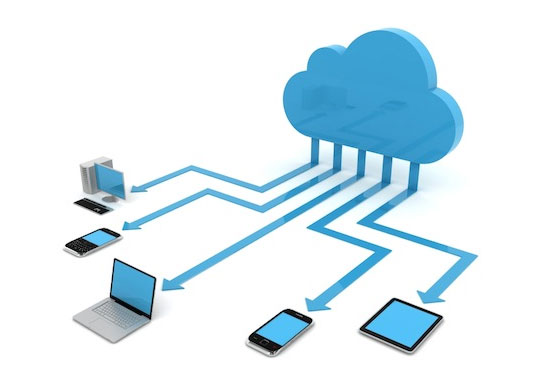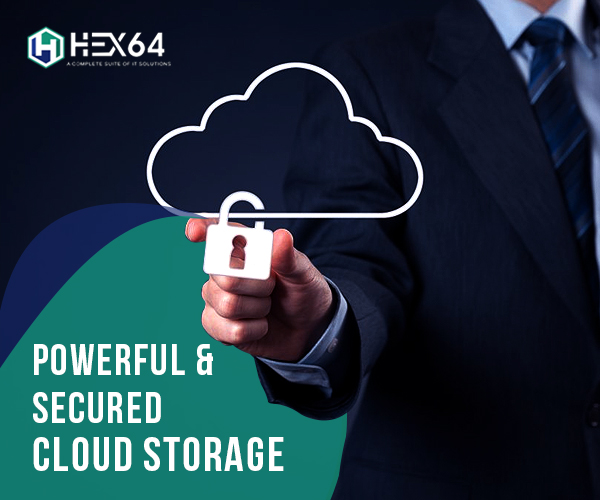Edge computing is an interesting new way to network architecture that supports companies break beyond the restrictions required by conventional cloud-based networks. Although cloud computing remains to play an essential role in modern network architecture, the exciting opportunities given by the Internet of Things (IoT) devices, which are strong of concocting the data they gather closer to the source, are forcing organizations to rethink their strategy to IT infrastructure.
Often touted as the “next big thing,” many companies are surely wondering how edge computing differs from more traditional data processing solutions and how it could benefit their business. While the basic principles behind edge computing are relatively straightforward, the substantial benefits of this new approach to network architecture are not always so obvious. Whether they’re trying to break into the IoT market or find better ways to deliver content services, companies need to be aware of the advantages offered by edge computing.
What is Edge Computing?
Traditional cloud computing networks are highly centralized, with data being gathered on the outermost edges and transmitted back to the main servers for processing. This architecture grew out the fact that most of the devices located near the edge lacked the computational power and storage capacity to analyze or process the data they collected. Even as more devices became capable of connecting to networks over cellular and WiFi, their functionality was relatively limited by their hardware capabilities.
All of that has changed in recent years thanks to the miniaturization of processing and storage technology. Today’s IoT devices are quite powerful, capable of gathering, storing, and processing more data than ever before. This has opened up opportunities for companies to optimize their networks and relocate more processing functions closer to where data is gathered at the network edge, where it can be analyzed and applied in real time much closer to intended users.
Since the data doesn’t have to travel all the way back to the central server for the device to know that a function needs to be executed, edge computing networks can greatly reduce latency and enhance performance. The speed and flexibility afforded by this approach to handling data creates an exciting range of possibilities for organizations.
The 5 Best Benefits of Edge Computing:
1. Speed
For many companies, speed is absolutely vital to their core business. The financial sector’s reliance upon high-frequency trading algorithms, for instance, means that a slowdown of mere milliseconds can have expensive consequences. In the healthcare industry, losing a fraction of a second can even be a matter of life or death. And for businesses that provide data-driven services to customers, lagging speeds can frustrate customers and cause long term damage to a brand. Speed is no longer just a competitive advantage—it is a best practice.
The most important benefit of edge computing is its ability to increase network performance by reducing latency. Since IoT edge computing devices process data locally or in nearby edge data centers, the information they collect doesn’t have to travel nearly as far as it would under traditional cloud architecture.
It’s easy to forget that data doesn’t travel instantaneously; it’s bound by the same laws of physics as everything else in the known universe. Current commercial fiber-optic technology allows data to travel as fast as 2/3 the speed of light, moving from New York to San Francisco in about 21 milliseconds. While that sounds fast, it fails to consider the sheer amount of data being transmitted. With the world expected to generate up to 44 zettabytes (one zettabyte equals a trillion gigabytes) of data in 2020, digital traffic jams are almost guaranteed.
There’s also the problem of the “last mile” bottleneck, in which data must be routed through local network connections before reaching its final destination. Depending upon the quality of these connections, the “last mile” can add anywhere between 10 to 65 milliseconds of latency.
By processing data closer to the source and reducing the physical distance it must travel, edge computing can greatly reduce latency. The end result is higher speeds for end users, with latency measured in microseconds rather than milliseconds. Considering that even a single moment of latency or downtime can cost companies thousands of dollars, the speed advantages of edge computing cannot be overlooked.
2. Security
While the proliferation of IoT edge computing devices does increase the overall attack surface for networks, it also gives some necessary security advantages. Traditional cloud computing architecture is inherently centralized, which creates it especially vulnerable to distributed denial of service (DDoS) attacks and power outages. Edge computing dispense processing, storage, and applications beyond a broad range of devices and data centers, which presents it difficult for any single disruption to take down the network.
One main concern about IoT edge computing machines is that they could be used as a point of entry for cyberattacks, enabling malware or other intrusions to infect a network from a single weak point. While this is a real risk, the shared nature of edge computing architecture makes it more comfortable to implement security protocols that can seal off compromised portions without shutting down the entire network.
Since more data is being processed on local devices rather than transmitting it back to a central data center, edge computing also decreases the amount of data really at risk at any one time. There are some data to be intercepted during transit, and even if a device is compromised, it will only contain the data it has managed locally rather than the trove of data that could be detected by a compromised server.
Also if an edge computing architecture includes specialized edge data centers, these often give additional security measures to guard against crippling DDoS attacks and other cyber threats. A quality edge data center should allow a different type of tools clients can use to secure and monitor their networks in real-time.
3. Scalability
As corporations grow, they cannot always assume their IT infrastructure requirements, and creating a dedicated data center is an expensive proposition. In increase to the substantial up-front construction expenses and ongoing maintenance, there’s also the question of tomorrow’s needs. Traditional private facilities place an unnatural constraint on extension, locking businesses into forecasts of their forthcoming computing needs. If the business gain exceeds expectations, they may not be capable to obtain on opportunities due to inadequate computing resources.
Fortunately, the development of cloud-based technology and edge computing has made it more accessible than ever for businesses to scale their operations. Frequently, computing, storage, and analytics capabilities are being bundled into devices with fewer footprints that can be established nearer to end-users. Edge systems enable businesses to leverage these devices to increase their edge network’s reach and capabilities.
Expanding data collection and analysis no longer needs businesses to organize centralized, private data centers, which can be costly to construct, maintain, and replace when it’s time to increase again. By modulate collocation services with regional edge computing data centers, businesses can extend their edge network to reach rapidly and cost-effectively. The flexibility of not having to rely upon a centralized infrastructure permits them to adapt quickly to evolving markets and scale their data and computing wants more efficiently.
Edge computing proposes a far less costly route to scalability, permitting corporations to expand their computing ability through a combination of IoT devices and edge data centers. The use of processing-capable edge computing machines also benefits increase prices because each new device added doesn’t impose substantial bandwidth needs on the core of a network.
4. Versatility
The scalability of edge computing also makes it incredibly adaptable. By collaborating with local edge data centers, the corporations can comfortably target desirable businesses without having to spend in expensive infrastructure expansion. Edge data centers permit them to service end-users efficiently with small physical distance or latency. This is particularly important for content providers looking to give uninterrupted streaming services. They also do not force businesses with a huge footprint; enabling them to nimbly move to other markets should economic requirements change.
Edge computing also empowers IoT devices to gather unprecedented numbers of actionable data. Rather than remaining for people to log in with machines and interact with centralized cloud servers, edge computing machines is constantly on, constantly connected, and constantly generating data for future analysis. The unorganized information gathered by edge networks can either be treated locally to give quick services or delivered back to the core of the network where important analytics and machine learning programs will analyze it to recognize trends and notable data points. Armed with this information, corporations can make better decisions and meet the true requirements of the market extra efficiently.
By consolidating new IoT gadgets into their edge network architecture, companies can give new and more reliable services to their clients without totally overhauling their IT infrastructure. Purpose-designed devices give an exciting area of opportunities to companies that value innovation as a means of driving the increase. It’s a large profit for industries looking to increase network reach into regions with insufficient connectivity (such as the manufacturing, healthcare, agricultural, and other sectors).
5. Reliability
Given the security benefits given by edge computing, it should not come as a wonder that it allows bigger reliability as well. With IoT edge computing machines and edge data centers located closer to end-users, there is the fewer chance of a network difficulty in a distant location affecting local customers. Even in the event of a nearby data center interruption, IoT edge computing machines will resume operating completely on their own because they manage vital processing functions natively.
By processing data closer to the source and prioritizing traffic, edge computing decreases the quantity of data flowing to and from the initial network, managing to lower latency and more active overall speed. Physical distance is crucial to performance as well. By placing edge systems in data centers geographically closer to end-users and sharing processing accordingly, organizations can considerably decrease the distance data must move before services can be performed. These edge networks guarantee a faster, seamless experience for their clients, who expect to have way to their content and applications on-demand anywhere at any moment.
With so many edge computing devices and edge data centers attached to the network, it becomes much more difficult for anyone failure to shut down service entirely. Data can be rerouted through multiple pathways to ensure users retain access to the products and information they demand. Effectively incorporating IoT edge computing devices and edge data centers into comprehensive edge architecture can, therefore, give exceptional authenticity.
HEX64 IT Infrastructure Outsourcing services help customers reduce costs, accelerate and enhance operational efficiency in business.
IT Infrastructure Outsourcing : Making the Edge Computing Business Case






